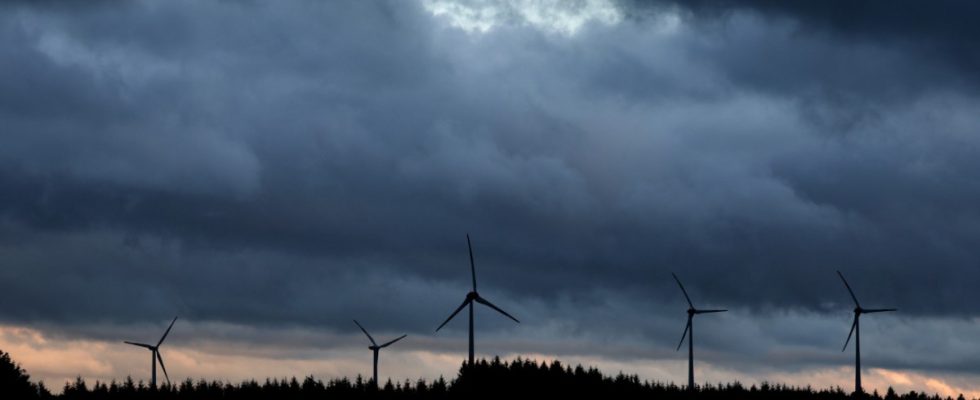High electricity prices, slow grid expansion, too little renewable energy, only moderate security of supply and too many climate-damaging emissions: the study on the implementation of the energy transition by Prognos AG presented in Munich on Thursday paints a sobering picture for Bavaria and for the whole of Germany. The study has been carried out since 2012 on behalf of the Bavarian Business Association (vbw).
According to the study, the Bavarian state government’s goal of achieving climate neutrality by 2040 is still unattainable. Currently, more than twice as many climate-damaging emissions are released into the atmosphere than the reduction path envisages. Calculated for the whole of Germany, the discrepancy between reality and desire is somewhat better, but here too the emissions are around 25 percent above the target path.
When it comes to affordability, the traffic lights for Germany and Bavaria are all red: In detail, the development is even worse than in previous years – because compared to 2021, energy prices climbed even further in the year 2022, the year under investigation. “Our monitoring traffic light is red here, it should actually be dark red,” said vbw managing director Bertram Brossardt on Thursday in Munich. The reasons for the immense costs for private households and industry are the effects of the energy crisis following the Russian attack on Ukraine. Even though gas prices have now fallen again, there are still effects for consumers.
Things are also looking very bad when it comes to network expansion in the federal government, such as in Bavaria. Although there is extensive planning, there is a big discrepancy in implementation compared to “what has actually been implemented,” said physicist Almut Kirchner from Prognos AG. “At the moment we have a delta of 2,000 kilometers and we are doing really well as long as the gap doesn’t get any bigger.” The currently much-discussed new power line P540, which has to go partly through southern Thuringia, is also not enough to cover Bavaria’s energy needs. “We will need a lot more from the north in order to secure supplies here and not have the electricity price zones split up.”
Unlike in previous years, the expansion of wind energy has long been recognized in the economy as a location factor. Brossardt continued to speak of an enormous need for action: “In purely mathematical terms, we have to put at least two large wind turbines into operation every week in order to achieve our climate and energy policy goals.”
Bavaria must “increase wind energy twenty times faster”
Brossardt recalled that there were only seven new wind turbines in Bavaria in 2023. “In terms of installed capacity, we need to add wind energy twenty times faster than is currently the case.” The expressions of will must finally be followed by actions. This is also important for maintaining jobs.
From expert Kirchner’s point of view, the renaissance of nuclear energy in Germany, which the Union, FDP and AfD have repeatedly called for, makes no sense. Both in Europe and worldwide, all ongoing nuclear power plant construction projects are experiencing immense time delays and an increase in costs. Currently, investing in new nuclear power plants is by far the “most expensive form of energy generation.” Anyone who demands this must be so honest that the taxpayer has to bear the costs, since the necessary investments can never be refinanced on the electricity market.
While Germany’s electricity needs could be met at any time by 2023 even after the nuclear power plants were shut down, as the study states, Bavaria is increasingly becoming an ever larger electricity importer. In the years 2019 to 2023, additional electricity imports were required to cover the maximum load in Bavaria.
At least on paper, Bavaria is now better connected in terms of hydrogen supply, emphasized Kirchner. This is only a plan so far, but it is of course part of the overall picture of the energy transition.

